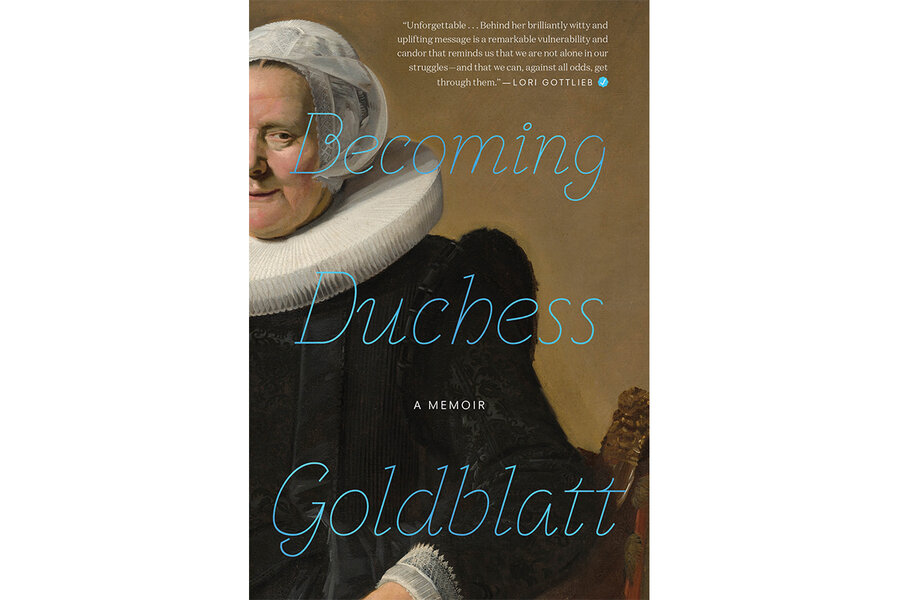The creator of ‘Duchess Goldblatt’ finds herself – and Twitter fans
The National Gallery of Art in Washington houses an unlikely attraction: the once-obscure 17th-century “Portrait of an Elderly Lady” by Frans Hals. Before the COVID-19 shutdown (the museum has since reopened some of its galleries but not apparently the one in which the painting appears), eager fans flocked to take selfies in front of the portrait, which depicts an unnamed woman with an impressive ruff around her neck. Her half-smile hints at a chuckle ready to burst into the open, as if she knows that in about four centuries her image will appear on mugs and bookmarks.
If you’re a fan of literature and you’re active online, you might know this twinkly woman in another guise. She’s the Twitter avatar of the thoroughly modern “Duchess Goldblatt,” a beguiling (if fictional) 81-year-old internet personality “made of spun sugar and justice.” She adores authors, has a kind word for just about everyone, and lives in the imaginary hamlet of Crooked Path, not far from the Home for Aged and Unpleasant Ex-Husbands.
As we learn in the curiously captivating new memoir “Becoming Duchess Goldblatt,” this character’s creator isn’t a famous author moonlighting as a Dutch matriarch or a blogger in disguise. In fact, the mighty Duchess Goldblatt – great beauty, lover of animals, ringleader of the Solid Goldblatt Dancers – was born of despair.
The memoir’s author, we learn, is an anonymous middle-aged writer and editor from New York state. She created the character in 2012 as she struggled with depression, isolation, and suicidal thoughts following a divorce and custody battle over her young son.
On Twitter, the Duchess is anything but isolated. She’s attracted a remarkable online community of “loons,” as she affectionately calls them. (Among them are several famous authors, including Elizabeth McCracken and Alexander Chee.) Her subjects address her as “Your Grace,” eagerly respond to her calls for pet and pie photos, and summon her for comforting words during tough times. And they devour her wry wit and wisdom, which live in the gray zone between astute and quirky: “Writing isn’t hard. Worming my way into your heart one step at a time is hard. But it’s holy work, and I bought a boat with the overtime.”
But the most compelling parts of “Becoming Duchess Goldblatt” come when the author explores her family’s past. She creates wrenchingly intimate portraits of her father, who is generous to a fault, and her brother, who struggles with mental illness.
Back on the Internet, the author’s saucy creation keeps on soothing and inspiring and befriending, so much so that her spirit begins to rub off on her creator. In one agonizingly tough moment, the memoir’s author hears “sounds passing through sudden rightnesses” – to borrow words from a Wallace Stevens poem – comforting her. “You will bear it,” she hears her fictional creation say. “You have to. You will.”
The author’s spirits lift over time as her creation becomes more popular, pulling her out of her isolation. She develops real-life relationships with a select few of the Duchess’ fans, including a close friendship with country star Lyle Lovett. And she realizes that the Duchess’ advice via Twitter deeply comforts her followers. “Things may not be okay, but you’re okay, and you will be. I promise,” she tells one reader. “You are a wonderfully kind soul, even if you are fictional,” he responds.
Not all readers will appreciate the Duchess’ humor or understand why anyone would bother to follow her online. The woman in the painting doesn’t strike everyone as kind. And some will wonder whether the unnamed author is herself a construction of some kind.
It’s true that the author could be leading us astray. But her story, a kind of reverse “Frankenstein,” rings true: When her life was in tatters, she created a character out of spare parts of herself and used it to create the community she craved. That lesson can never be heard too often. Like objects in a rearview mirror, the inspiration we seek may be closer than we think.






